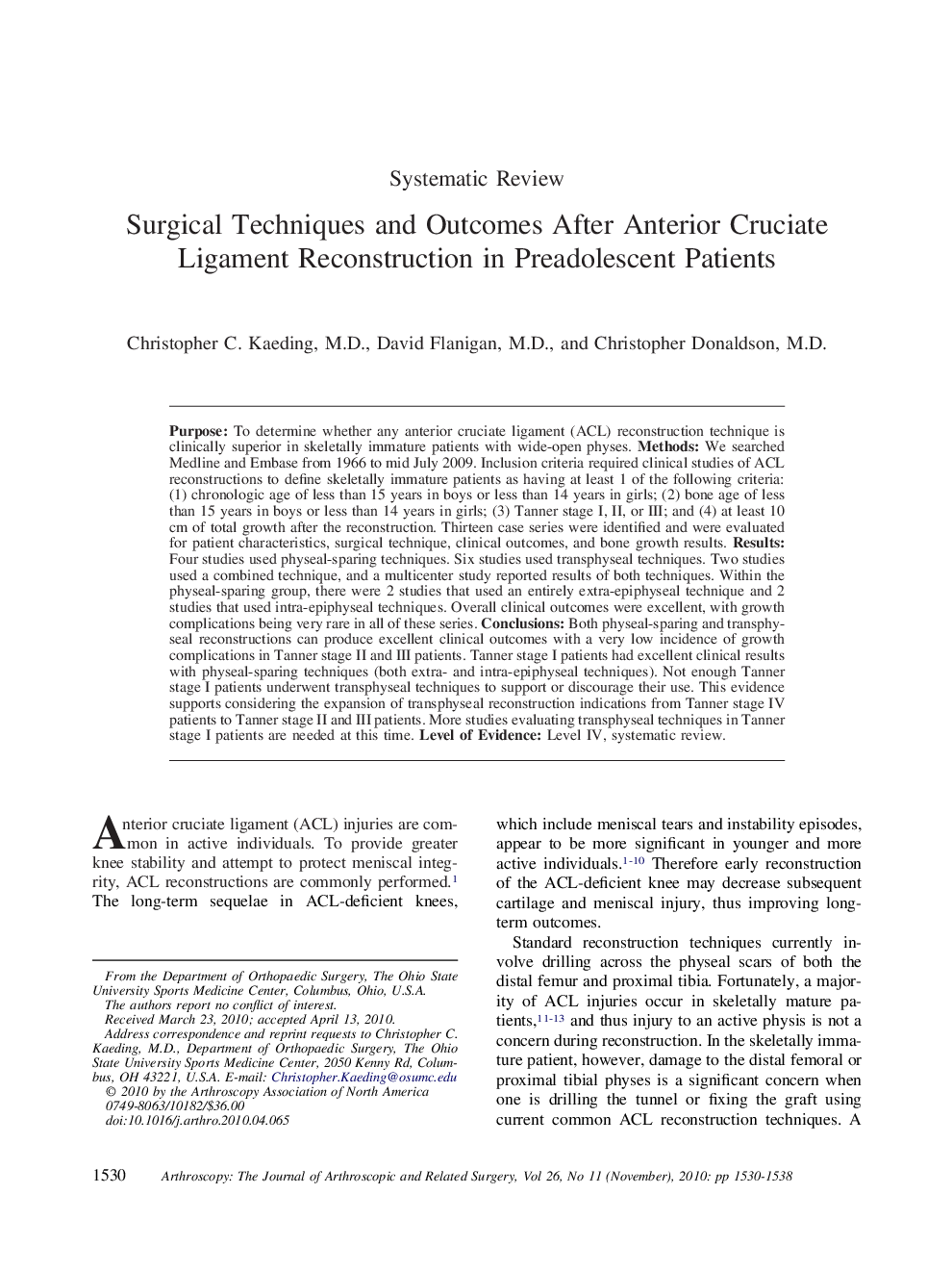| Article ID | Journal | Published Year | Pages | File Type |
|---|---|---|---|---|
| 4045062 | Arthroscopy: The Journal of Arthroscopic & Related Surgery | 2010 | 9 Pages |
PurposeTo determine whether any anterior cruciate ligament (ACL) reconstruction technique is clinically superior in skeletally immature patients with wide-open physes.MethodsWe searched Medline and Embase from 1966 to mid July 2009. Inclusion criteria required clinical studies of ACL reconstructions to define skeletally immature patients as having at least 1 of the following criteria: (1) chronologic age of less than 15 years in boys or less than 14 years in girls; (2) bone age of less than 15 years in boys or less than 14 years in girls; (3) Tanner stage I, II, or III; and (4) at least 10 cm of total growth after the reconstruction. Thirteen case series were identified and were evaluated for patient characteristics, surgical technique, clinical outcomes, and bone growth results.ResultsFour studies used physeal-sparing techniques. Six studies used transphyseal techniques. Two studies used a combined technique, and a multicenter study reported results of both techniques. Within the physeal-sparing group, there were 2 studies that used an entirely extra-epiphyseal technique and 2 studies that used intra-epiphyseal techniques. Overall clinical outcomes were excellent, with growth complications being very rare in all of these series.ConclusionsBoth physeal-sparing and transphyseal reconstructions can produce excellent clinical outcomes with a very low incidence of growth complications in Tanner stage II and III patients. Tanner stage I patients had excellent clinical results with physeal-sparing techniques (both extra- and intra-epiphyseal techniques). Not enough Tanner stage I patients underwent transphyseal techniques to support or discourage their use. This evidence supports considering the expansion of transphyseal reconstruction indications from Tanner stage IV patients to Tanner stage II and III patients. More studies evaluating transphyseal techniques in Tanner stage I patients are needed at this time.Level of EvidenceLevel IV, systematic review.
